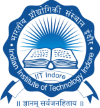Professor1D-303, POD BuildingEmail: anjanc[at]iiti.ac.in Phone: +91 0731 660 3349 Group Website |  |
Research Interests
Nanoparticle-Liposome interactions:
Membranes are usually composed of phospholipids which consist of polar head group and non-polar tail group. Lipid bilayer or liposome is a spherical vesicle which is made up of the same material as a cell membrane. When the nanoparticles come to the vicinity of the living systems, the membrane acts as their initial point of contact and appears as the frontier between the cell and the nanoparticles. Our group investigates the tuneable stability of the liposomes in presence of different surface-functionalized nanoparticles. Recently, we are also exploring the formation and stability of the “lipid corona” (coating of lipid molecules around NPs) around the Au NPs.
Biomolecules-Liposome interactions:
A biomolecule or biological molecule is a loosely used term for molecules present in organisms that are essential to one or more typically biological processes. Our study mainly focuses on the effect of several biomolecules (e.g. amino acids or oligopeptides, Monosaccharides or Oligosaccharides, and Nucleotides or Oligonucleotides) on the stability of lipid vesicles. This study is important to prepare the engineering lipid vesicles which have better resistivity in our immune system.
Effect of Amyloid aggregation on the membrane:
The spontaneous formation of amyloid structures of proteins is responsible for several major human neurodegenerative diseases. The interaction between the amyloid structure of amino acids or proteins and the lipid membrane has great importance to understand the underlying cytotoxic behaviour of these amyloid structures which also help us to understand several proteins or peptide-based fusion and fission of the lipid membrane.
Selected Publications
- A. Maity, D. Bagchi, S. K. De, A. Chakraborty*, Insight into the Lysozyme Induced Aggregation of Aromatic Amino Acid Functionalized Gold Nanoparticles: Impact of Protein Conjugation and Lipid Corona on the Aggregation Phenomena. Langmuir 2023, 39, 4881–4894.
- D. Bagchi, A. Maity, S. K. De, A. Chakraborty*, Metal-Ion-Induced Evolution of Phenylalanine Self-Assembly: Structural Polymorphism of Novel Metastable Intermediates. J. Phys. Chem. Lett. 2022, 13, 10409−10417.
- A. Maity, S. K. De, D. Bagchi, H. Lee*, A. Chakraborty*, Mechanistic Pathway of Lipid Phase Dependent Lipid Corona Formation on Phenylalanine Functionalized Gold Nanoparticles: a Combined Experimental and Molecular Dynamics Simulation Study. J. Phys. Chem. B 2022, 126, 11, 2241–2255
- D. Bagchi, A. Maity, S. K. De, A. Chakraborty*, Effect of Metal Ions on the Intrinsic Blue Fluorescence Property and Morphology of Aromatic Amino Acid Self-Assembly. J. Phys. Chem. B 2021, 125, 12436-12445
- S. Bishnoi, S. Rehman, S. B. Dutta, S. K. De, A. Chakraborty, D. Nayak, S. Gupta, Optical-Property-Enhancing Novel Near-Infrared Active Niosome Nanoformulation for Deep-Tissue Bioimaging. ACS Omega 2021, 6, 35, 22616–22624
- S. K. De, A. Maity, D. Bagchi, A. Chakraborty*, Lipid phase dependent distinct emission behaviour of hydrophobic carbon dots: C-dots based membrane probe. Chem.Commun. 2021, 57, 9080-9083
- S. K. De, A. Maity, A. Chakraborty*, Underlying Mechanisms for the Modulation of Self-Assembly and the Intrinsic Fluorescent Properties of Amino Acid-Functionalized Gold Nanoparticles. Langmuir 2021, 37, 16, 5022–5033
- A. Maity, S. K. De*, A. Chakraborty*, Interaction of Aromatic Amino Acid-Functionalized Gold Nanoparticles with Lipid Bilayers: Insight into the Emergence of Novel Lipid Corona Formation. J. Phys. Chem. B 2021, 125, 8, 2113–2123
